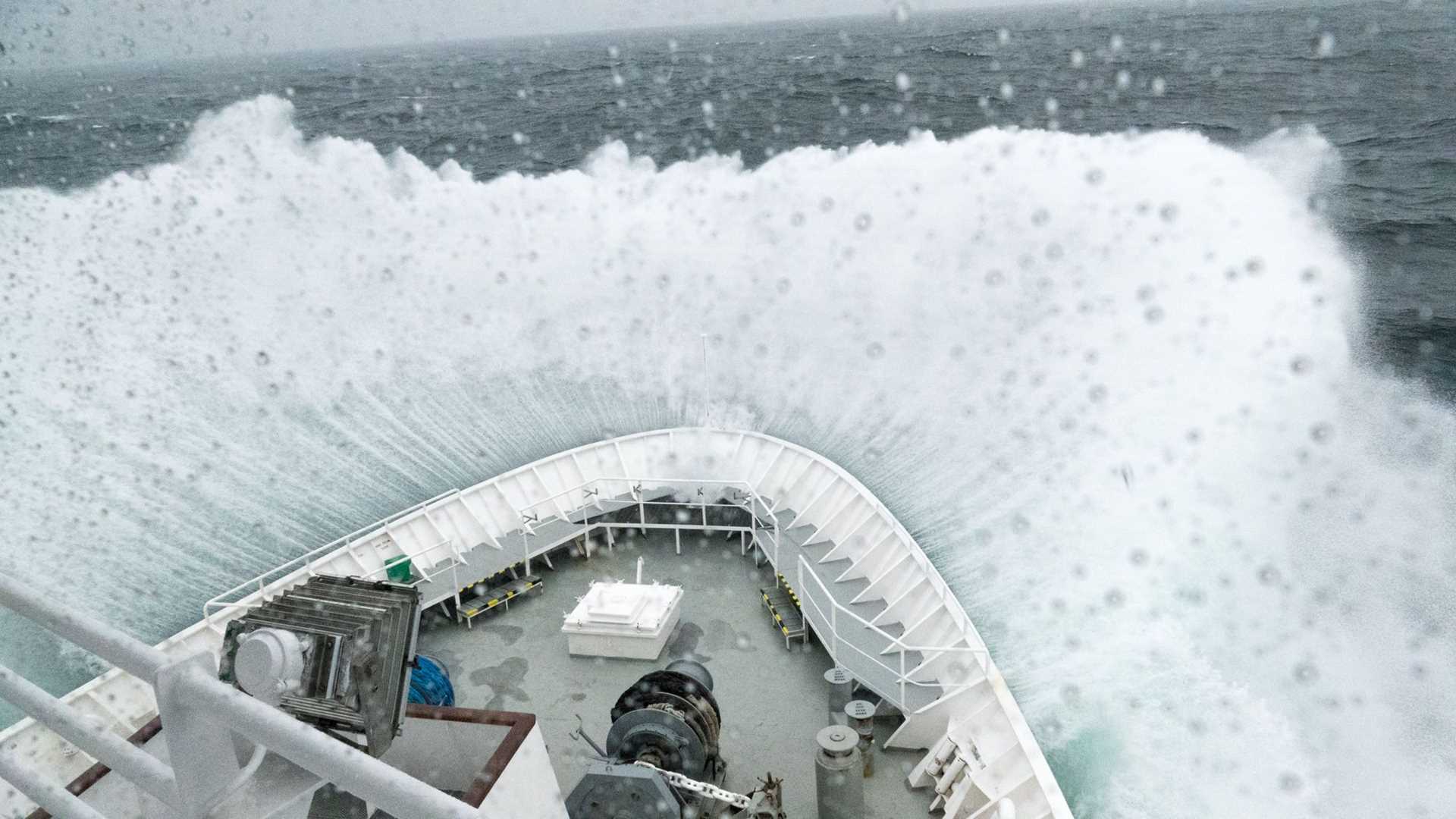Braving the crossing from the Falkland Islands, the National Geographic Explorer came to the Willis Islands in the morning to witness a myriad of seabirds dipping and diving into the water to feed, including prions and grey-headed albatross. The Southern Ocean was showing its might, casting a northerly wind across the entirety of the north shore of South Georgia. Thus, much as Shackleton and his men did, we entered King Haakon Bay and came to land exactly at the site where the members of the Endurance expedition found terra firma, after their long, and impossible journey over from Elephant Island.
- Daily Expedition Reports
- 14 Mar 2018
Willis Islands & Peggotty Bluff, 3/14/2018, National Geographic Explorer
- Aboard the National Geographic Explorer
- Antarctica
Paul North, Undersea Specialist
Paul North is the founder of the educational nonprofit Meet the Ocean and host of its online podcast. As a polar diver with Lindblad Expeditions/National Geographic, he tours the remote underwater landscapes of Antarctica and other sub-zero destinati...
Read MoreBradford McArthur, Videographer
Bradford McArthur has been shooting film and photos since the 1990's (pre-digital dinosaur!) Committed to filming isolated regions and untold stories through a message of conservation, McArthur founded Forever Exploring Productions in 2009. As a form...
Read MoreShare Report
South Georgia and the Falklands
VIEW ITINERARYRelated Reports
3/14/2025
Read
National Geographic Resolution
New Island, Falkland Islands
Our final day of operations for the expedition (and the season) took place at New Island, one of the most beautiful islands in the Falkland Islands. Guests were amazed by the sheer cliffs of the outer coast, home to thousands of rockhopper penguins and even more black-browed albatross. While guests were ashore, the undersea team explored the underwater world of the Falkland Islands. We cruised through the amber forest of giant kelp and photographed the large sun stars but also some of the smaller denizens like tessellated patagonotothen fishes and beautiful purple-lined isopods. The highlight of the dive was one of the largest jellies either of us had seen. A gargantuan lion’s mane jelly was wrapped up in the kelp and its bell was almost 4 feet across. Truly a sight to behold and a favorite when shown to the guests at recap.
3/13/2025
Read
National Geographic Resolution
West Point Island
Our destination this afternoon remains my very favorite place in the Falklands. A warm welcome is always given by the caretakers of this lovely place, Theis and Kiki – Swedish and German respectively. They were at the end of their nine years here and we were among the last ships to visit this season. Of course, we visit the island because of the wildlife, and, after a nice forty-minute walk, we arrived at the Devil’s Nose albatross colony. Here, we found thousands of black-browed albatrosses living cheek by jowl with hundreds, if not thousands of rockhopper penguins. It is not always a happy marriage, but generally they get on, the albatross helping protect the penguin eggs and chicks from predation by the local Johnny rooks aka striated caracaras. A good walk deserves a fine afternoon tea, and we were treated to just that back at the farmhouse. In the garden, a yellow rose flowered beautifully overlooking the place where Lars Eric Lindblad’s ashes were scattered.









